Exploring tuscany’s landscape: the cypress trees and beyond
- OSF Herbarium
Tuscany is a beautiful region in central Italy known for its gorgeous vistas, quaint hilltop towns, and luscious vineyards. Nothing, however, better encapsulates the essence of Tuscany than the renowned cypress tree, or “cipresso” in Italian. These magnificent trees have long been important in the region’s history, art, and culture. In this post, we’ll look at the beauty and attractiveness of cypress trees in Tuscany, as well as its historical and cultural significance in Italy’s most beautiful area.
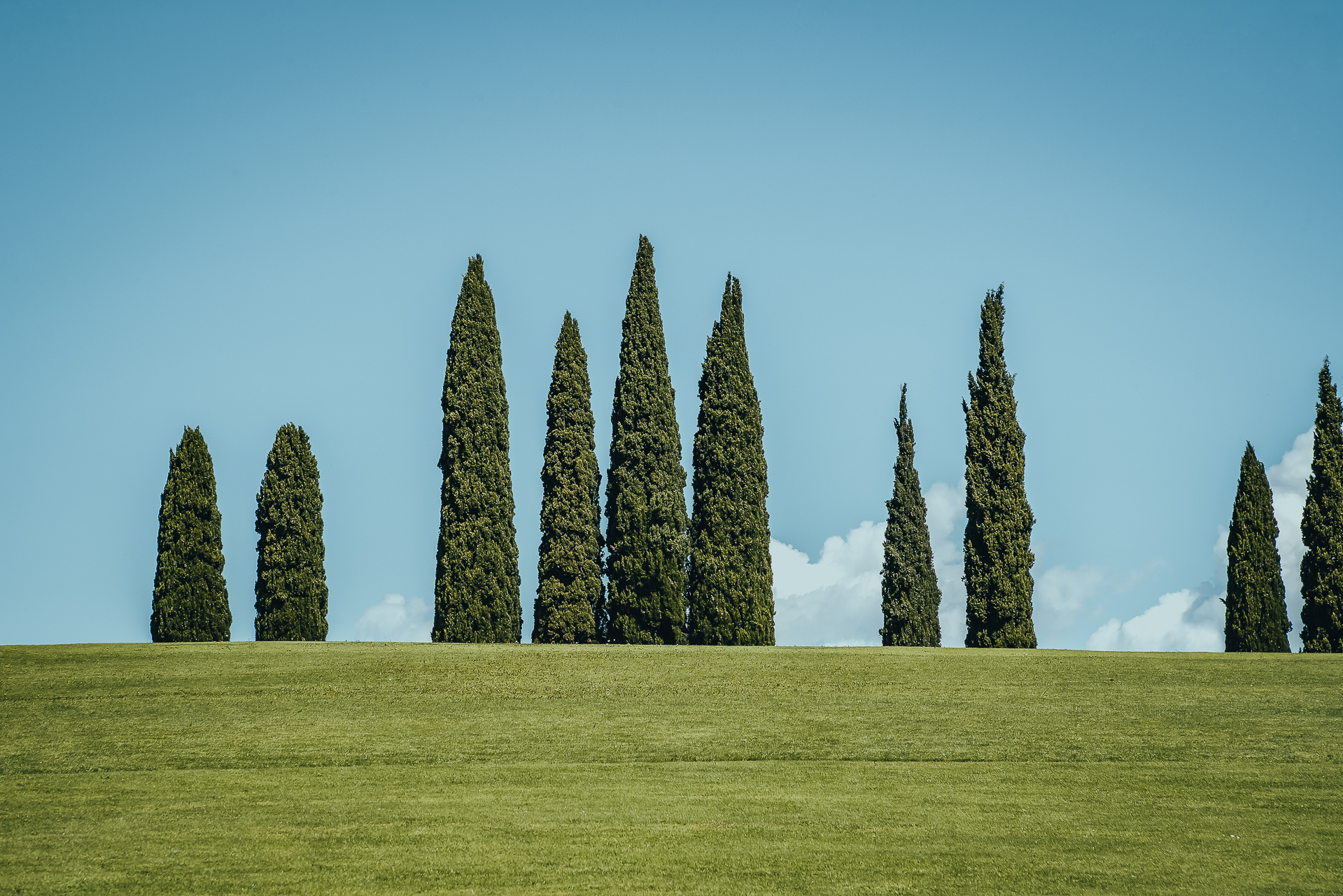
What exactly is the Cipresso?
The cypress tree, scientifically known as Cupressus sempervirens, is an evergreen conifer that may reach heights of 115 feet. Its thin, columnar structure and rich, dark green foliage set it apart in the Tuscan countryside.
Cypress trees (Cupressus sempervirens) are not commonly thought to be a source of edible components for humans. Their leaf and cones, on the other hand, contain volatile oils that have been used in traditional medicine for a variety of purposes, including curing coughs, colds, and bronchitis. Aromatherapy and perfumery both make use of the essential oil extracted from cypress plants.

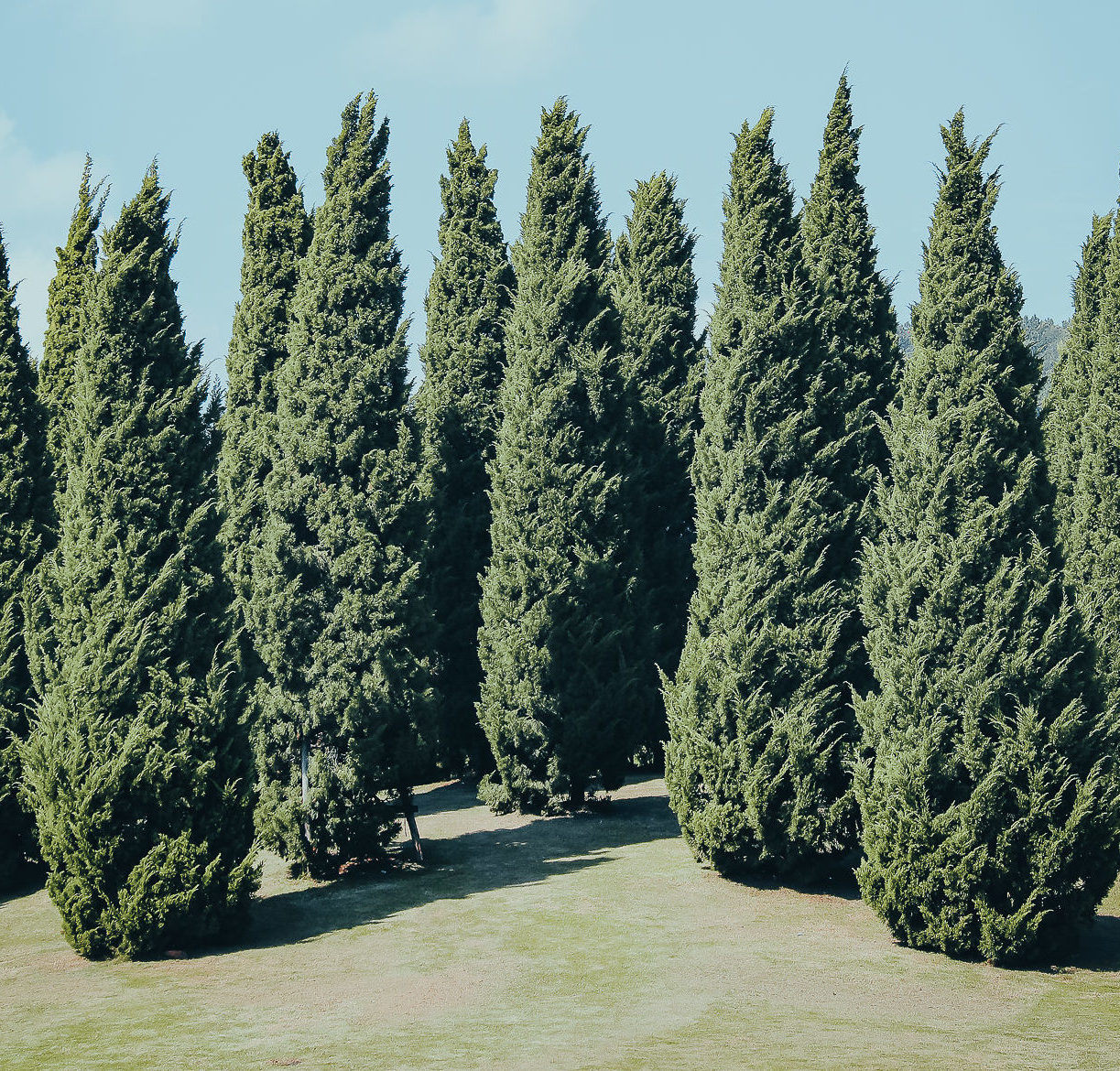
In Tuscany, there are two species of cypress trees
Cypress (Cupressus sempervirens ‘Stricta’) columnar or upright
This cypress tree is distinguished by its tall, slender, and columnar shape. It’s the most prevalent kind in Tuscany and is frequently used to line driveways, roadways, and property boundaries.
Cypress, horizontal or spreading (Cupressus sempervirens ‘Horizontalis’)
This cypress tree grows in a more spreading, horizontal manner. While it is less widespread in Tuscany, it may still be found in gardens and parks across the region.
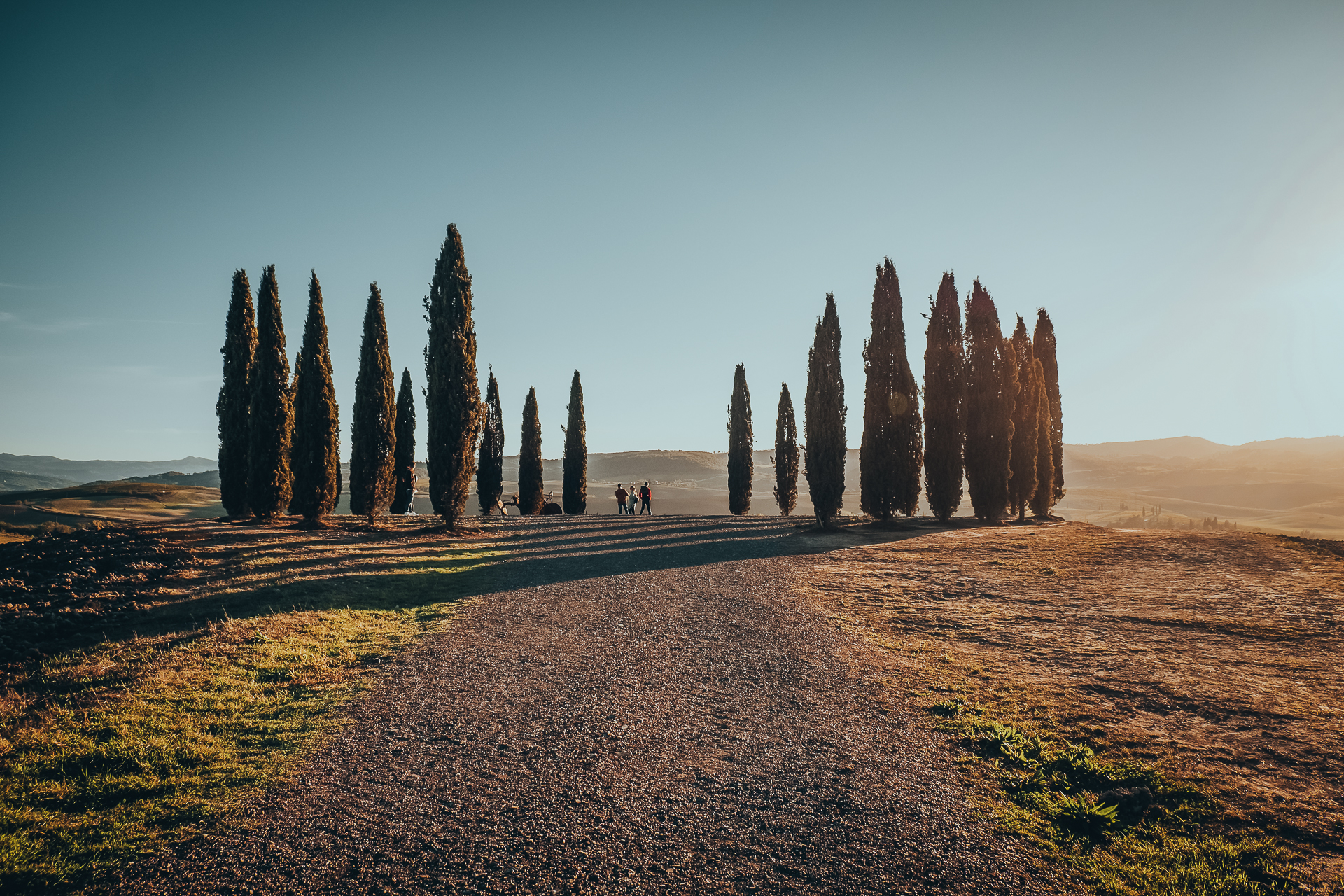
The Cipresso Tree's History in Tuscany
In Tuscany, cypress trees have a rich and fascinating history stretching back to ancient times. The Etruscans, an ancient civilization in Italy that predated the Romans, valued the cypress tree and used it for a variety of purposes, including building materials and medicinal cures. The cypress was also appreciated by the Romans, who planted it around temples, houses, and burial grounds.
Cypress trees have been an enduring emblem of Italian culture and art over the centuries. Renowned artists such as Leonardo da Vinci and Sandro Botticelli frequently used cypress trees in their works, demonstrating their eternal appeal. Cypress trees have long been used in Tuscan architecture and garden design to create structure, frame views, and provide a sense of continuity.

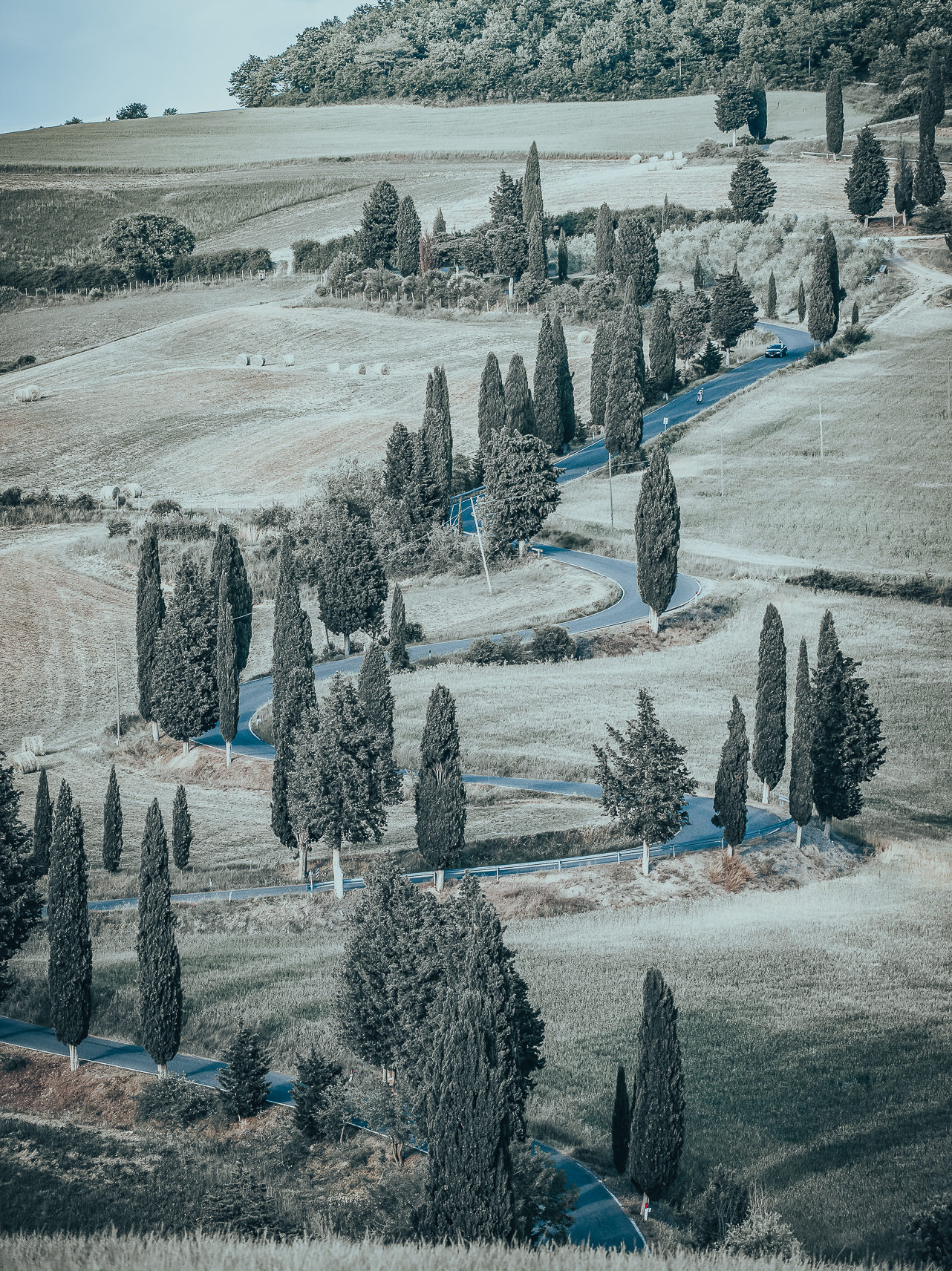
Tuscany Landscapes with Cypress Trees
Tuscany has some of the most beautiful cypress tree settings on the planet. Here are some noteworthy examples:
Famous cypress-lined roads and avenues: The meandering, cypress-lined roads that meander across the Tuscan countryside are one of the most famous views. These avenues, formed by rows of towering cypress trees, stand out against the backdrop of rolling hills and vineyards.
Beautiful cypress groves and hilltop towns: There are magnificent hilltop towns and villages all around Tuscany, frequently flanked by cypress woods. These trees not only beautify the communities, but they also function as natural beacons, directing tourists to their destinations.
Cypress trees as natural landmarks in the Tuscan countryside: Cypress trees have historically been employed as markers and boundary indicators in the countryside, in addition to their aesthetic value. Farmers would plant cypress trees to mark their property limits, making it easy to identify them.
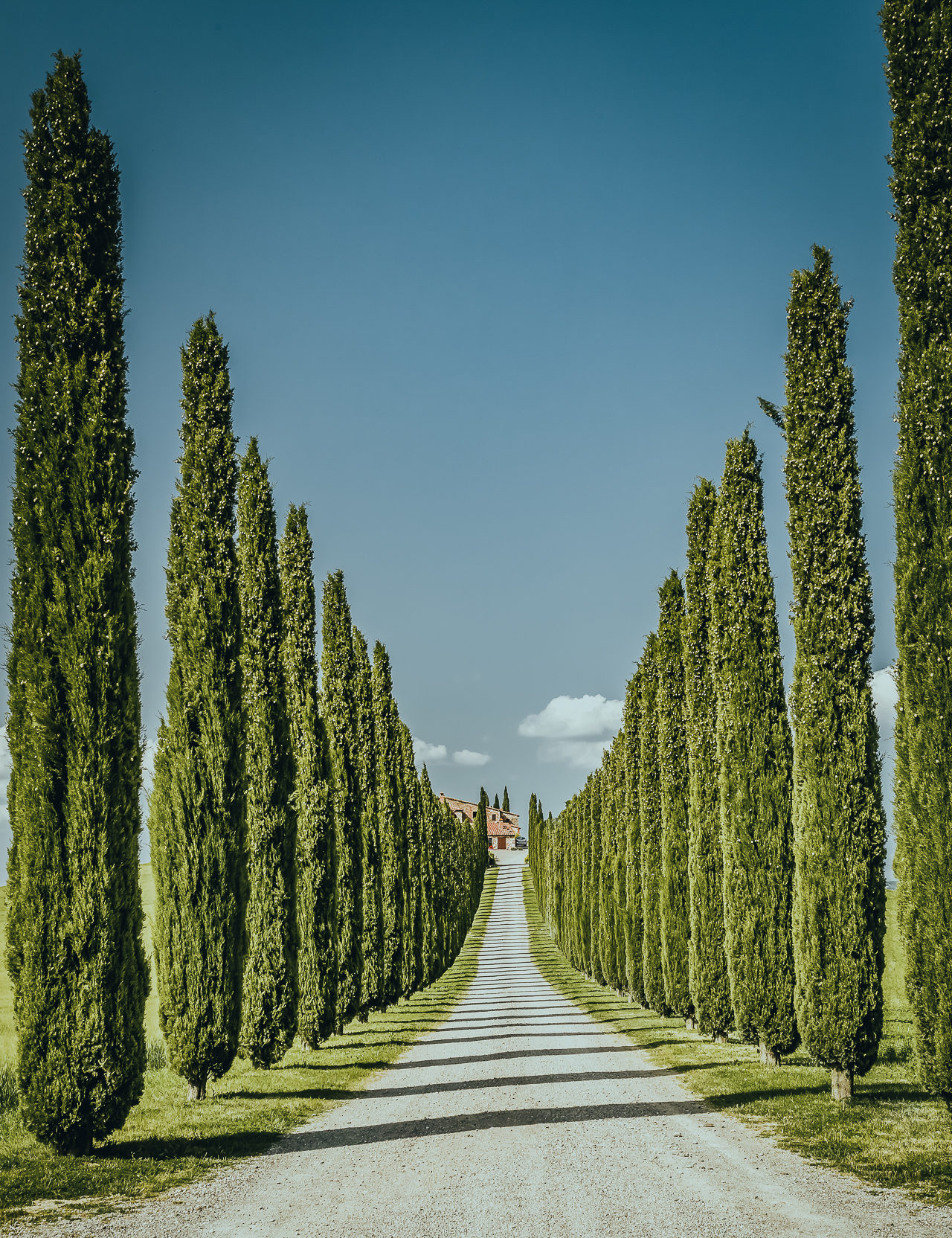
Visiting Tuscany's Cypress Trees
A visit to Tuscany is required to really appreciate the magnificence of cypress trees. The spring and summer months are ideal for observing cypress trees in Tuscany since the scenery is lush and verdant. Here are some great places to witness cypress trees in their full glory:
Val d’Orcia, a UNESCO World Heritage Site, is known for its breathtaking views and cypress-lined roadways. The area is rich in photo opportunities and gorgeous drives that are ideal for capturing the essence of Tuscany.
The Chianti region, located between Florence and Siena, is well-known for its wine production and gorgeous countryside. Beautiful cypress trees can be seen throughout the vineyards and along the roadways.
The cypress trees that encircle this medieval hilltop town add to its charm and character. Take a leisurely stroll around town to take in the sights and explore the town’s famed towers.
While Siena is famed for its beautiful architecture and historic buildings, the surrounding area is also home to some of Italy’s most beautiful cypress tree settings. To properly appreciate the area’s beauty, explore it on foot or by bike.
Throughout the region, guided tours and activities focusing on cypress trees are available, giving tourists with professional insights into the history, symbolism, and cultural significance of these iconic trees.

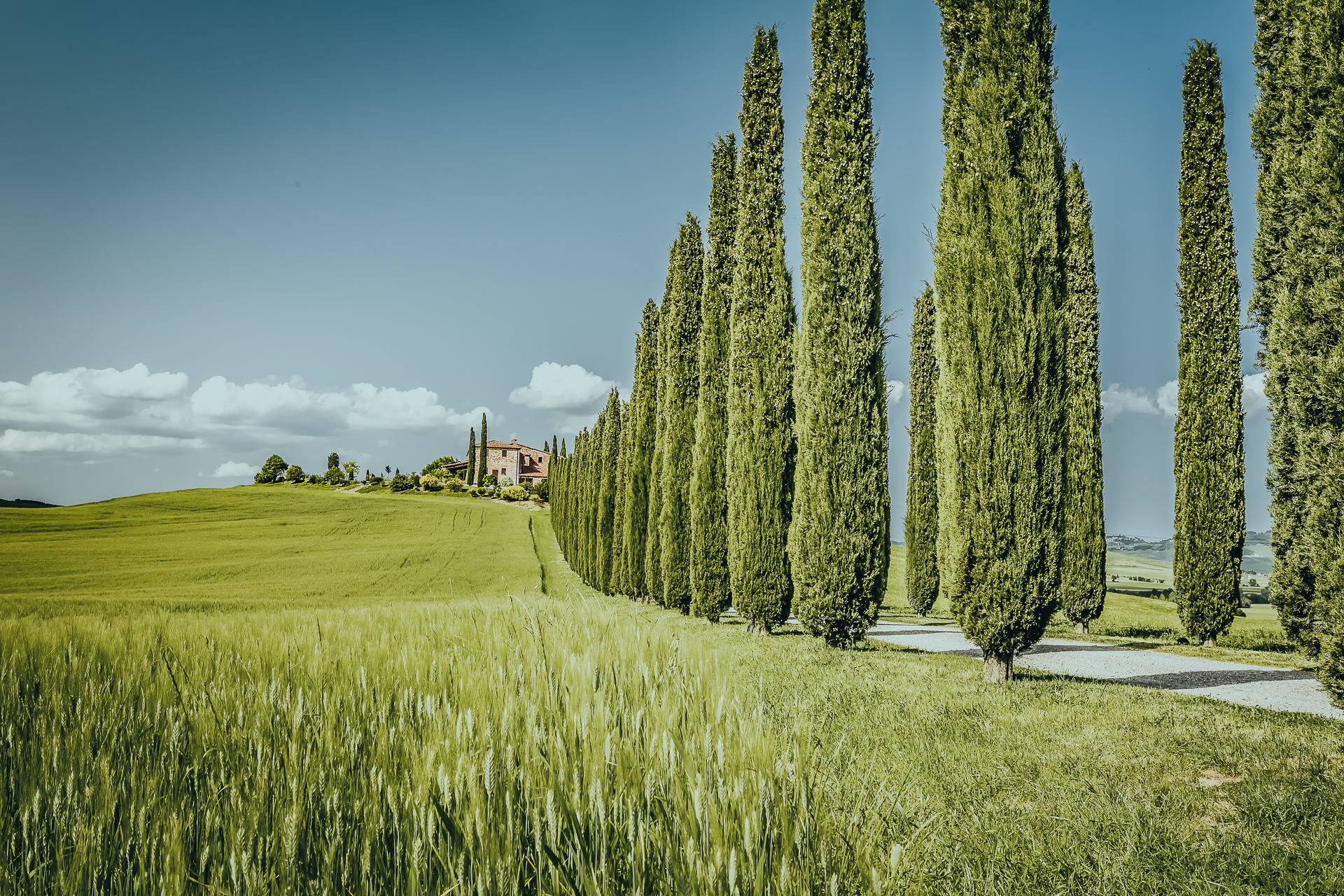
Taking Care of Cipresso Trees
If you’re motivated to plant and nurture cypress trees in your own garden, here are some care and maintenance guidelines:
Choose a sunny spot with well-drained soil. Given their mature size, the trees should be spaced correctly.
Cypress trees should be pruned in late winter or early spring to keep their shape and encourage dense growth.
Keep an eye out for common pests like spider mites and diseases like root rot. If you observe any signs of infestation or illness, get treatment from a certified arborist or a local nursery.
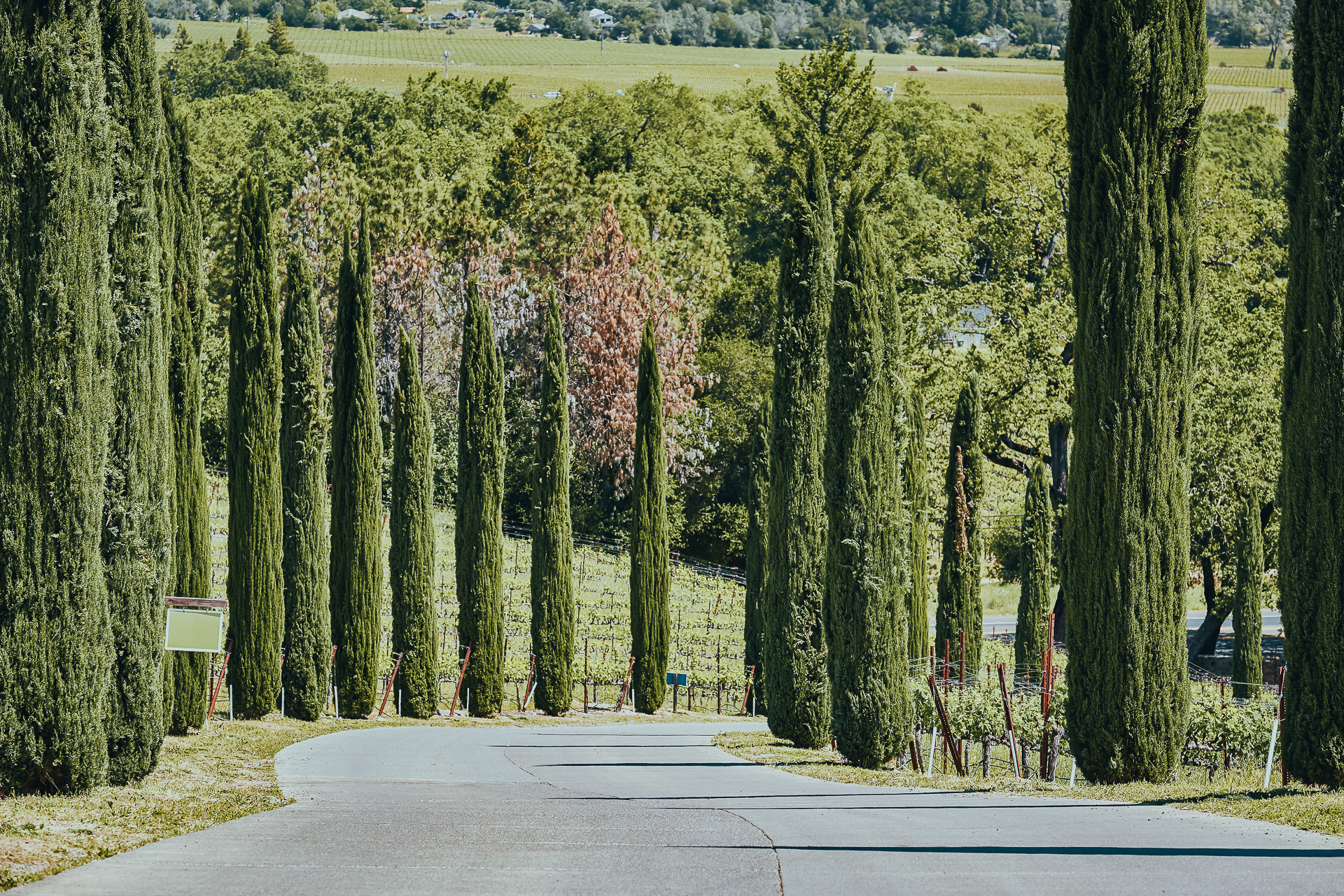
Conclusion
Finally, the cypress tree, or “cipresso,” is an iconic and necessary part of Tuscany’s landscape, history, and culture. For generations, the cypress tree has attracted painters, builders, and visitors to the region with its striking beauty and deep-rooted symbolism. The cypress gives an obvious touch of magic to Italy’s scenic heartland, whether you’re enjoying the gigantic rows of cypresses line Tuscan roadways or touring the lovely hilltop towns encircled by these beautiful trees.

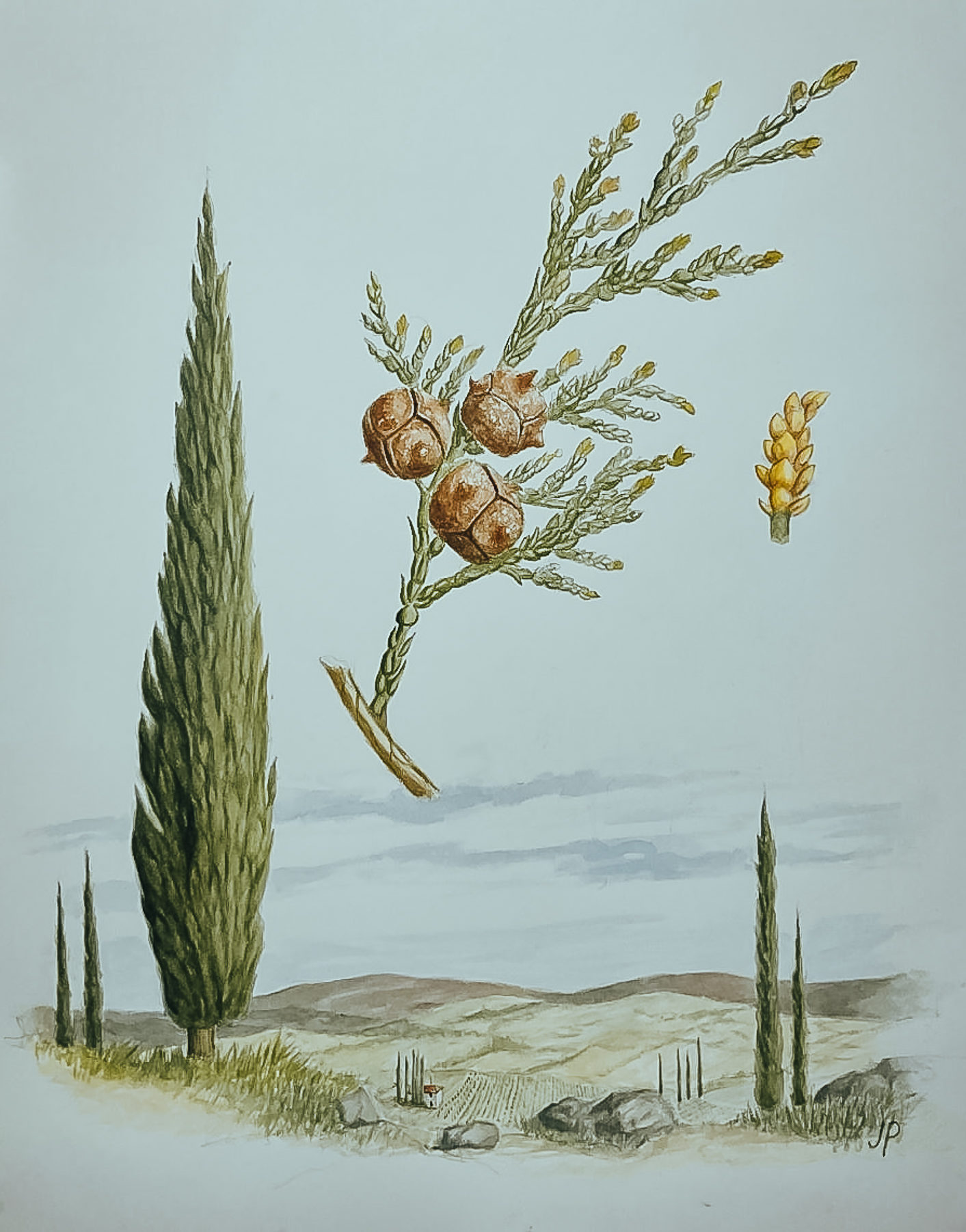
It has been used as markers and boundary indicators in the countryside for generations, and its striking beauty and symbolism have attracted painters, builders, and visitors to the region. To plant and nurture cypress trees in your own garden, follow these care and maintenance guidelines: planting in a sunny spot with well-drained soil, pruning in late winter or early spring, and getting treatment from a certified arborist or local nursery. Cypress trees in Tuscany are an evergreen conifer that can grow up to 115 feet tall and contain volatile oils that have been used in traditional medicine. There are two main types of cypress trees found in Tuscany: columnar or upright cypress (Cupressus sempervirens ‘Stricta’) and horizontal or spreading cypress (Cupressus sempervirens ‘Horizontalis’). Cypress trees have a long and fascinating history in Tuscany, dating back to ancient times.
To truly appreciate the beauty of cypress trees in Tuscany, a visit is a must during the spring and summer months. Caring for cypress trees is easy, with tips for planting, pruning, and pest and disease prevention.
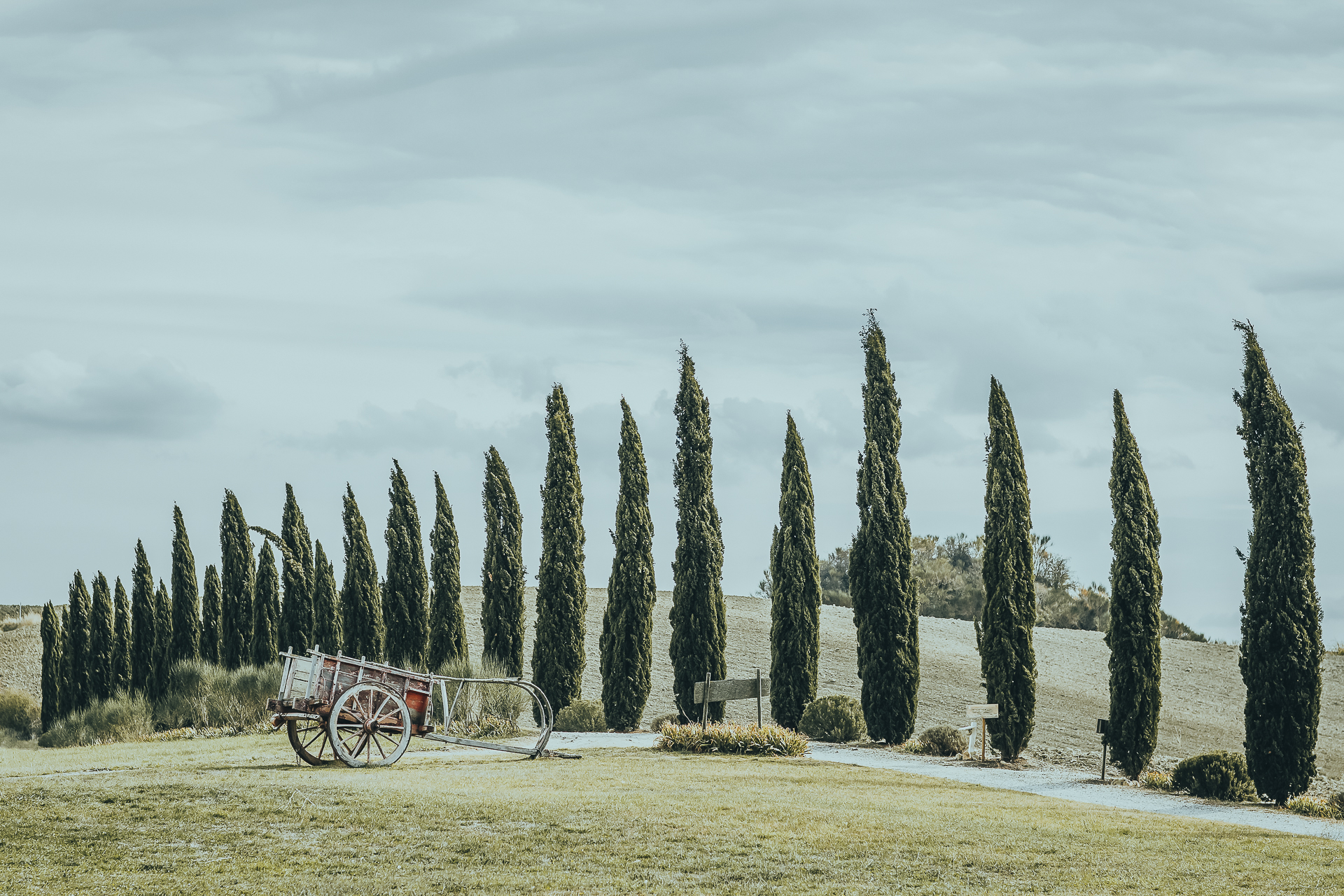
Summary
The cypress tree, Cupressus sempervirens, is an evergreen conifer that may reach heights of 115 feet. Its thin, columnar structure and dark green foliage set it apart in the Tuscan countryside. Cypress trees contain volatile oils that have been used in traditional medicine for a variety of purposes. In Tuscany, there are two species of cypress trees: columnar or upright (Cupressus sempervirens ‘Stricta’) and horizontal or spreading (Cupressus sempervirens ‘Horizontalis’). They have a rich and fascinating history stretching back to ancient times.
The cypress tree was valued by the Etruscans and Romans and has been an enduring emblem of Italian culture and art. Tuscany has some of the most beautiful cypress tree settings on the planet, such as famous cypress-lined roads and avenues, beautiful cypress groves and hilltop towns, and natural landmarks in the countryside. A visit to Tuscany is necessary to appreciate the magnificence of cypress trees, and the spring and summer months are ideal for observing them. The Val d’Orcia is a UNESCO World Heritage Site known for its breathtaking views and cypress-lined roadways. The cypress tree, or “cipresso,” is an iconic and necessary part of Tuscany’s landscape, history, and culture.








